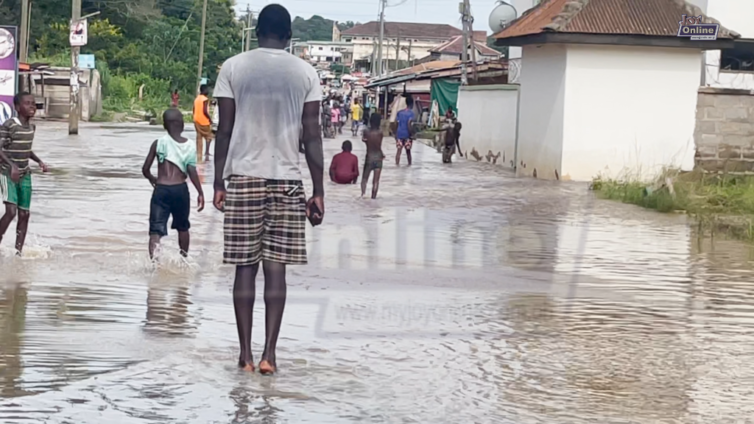Many Ghanaians have expressed concern about recent heavy rains in some parts of the country, but the Ghana Meteorological Agency's Chief Forecaster says it is not a new phenomenon.
According to Fecility Ahafianyo, La Niña is a global weather phenomenon associated with wet seasons in Western and Eastern Africa.
La Niña refers to the periodic cooling of sea-surface temperatures across the east-central equatorial Pacific - an oceanic and atmospheric phenomenon, that is the colder counterpart of El Niño, as part of the broader El Niño–Southern Oscillation (ENSO) climate pattern.
La Niña weather is a pattern that occurs in the Pacific Ocean. In this pattern, strong winds blow warm water at the ocean's surface. As the warm water moves, cold water from the deep rises to the land surface rich in moisture suitable for rain cloud formation.
"When we have a La Niña phase, we have wet conditions in most of west and east Africa," she explained.
"According to available data," Felicity told JoyNews Mahmud Mohammed-Nurudeen, the phenomenon is not new, but "in terms of intensity, people should be concerned."
She stated that each rainy season has its own variations, and this is one of the 2022 anomalies.
According to the World Meteorological Organization, there have been 24 cases of La Niña since 1951, with the strongest being in 1982-83, 1997-98, and 2015 - 16.
The most recent La Niña occurred in 2020-21, and it was moderate, similar to the first incident in 1951-52.
According to Felicity, the La Niña strengthened in the middle of June and is expected to weaken in April 2023.
This means that the country is likely to experience frequent rainfall patterns during these times.
"This year, we have a good rainy season during the main cropping season, and the La Niña intensity is about 91-94%."
However, one major challenge is that its intensity can cause flash floods, threatening farmers' livelihoods and other activities.
Some crops that do not require a lot of rain may be harmed, according to Felicity, and "that's what we should be looking out for during the period."
Felicity also discussed El Nino, which caused drier weather conditions during the 2018-2019 major rainy season. Longer dry spells shortened the cropping season.
El Niño refers to above-average sea-surface temperatures that occur on a regular basis across the east-central equatorial Pacific. It represents the ENSO cycle's warm phase.
The 1997-1998 El Niño event was followed by a prolonged La Niña phase that lasted from mid-1998 to early 2001. El Niño/La Niña events alter the likelihood of specific climate patterns around the world, but the outcomes are never identical.
She advised Ghanaians to stay up to date on GMet weather updates in order to plan their activities.
Latest Stories
-
Ken Ofori-Atta listed on INTERPOL Red Alert over “using public office for profit”
13 minutes -
World Vision empowers health workers in Agortime Ziope with life-saving infection control training
14 minutes -
Plan International Ghana launches She Leads Social Movement to sustain girls’ rights advocacy
24 minutes -
Gov’t pledges action to empower girls, young women at She Leads Social Movement launch
31 minutes -
Environmentalists push for waste-to-wealth innovations on World Environment Day
50 minutes -
GRNMA strike: Sick pockets can’t take care of sick patients – Ashanti GRNMA
56 minutes -
Traders appeal for designated spaces after Accra decongestion
1 hour -
F1’s return to Africa: will legacy, ambition, or diplomacy win the race?
1 hour -
Thomas Partey headlines fourth edition of All Star Festival
1 hour -
World Environment Day: GJESHA urges media, gov’t to step up fight against plastic pollution
1 hour -
Yamal scores twice as Spain beat France in nine-goal thriller to make Nations League final
2 hours -
Nestlé Supplier Day 2025: Fostering collaboration for sustainable growth
2 hours -
Don’t risk progress with new reforms – IERPP cautions BoG
3 hours -
Planting for the Future: Forest clubs and tree planting drive to combat environmental damage
3 hours -
Over-concentration of resources in urban centres stifling national economic progress – Nii Moi Thompson
3 hours

